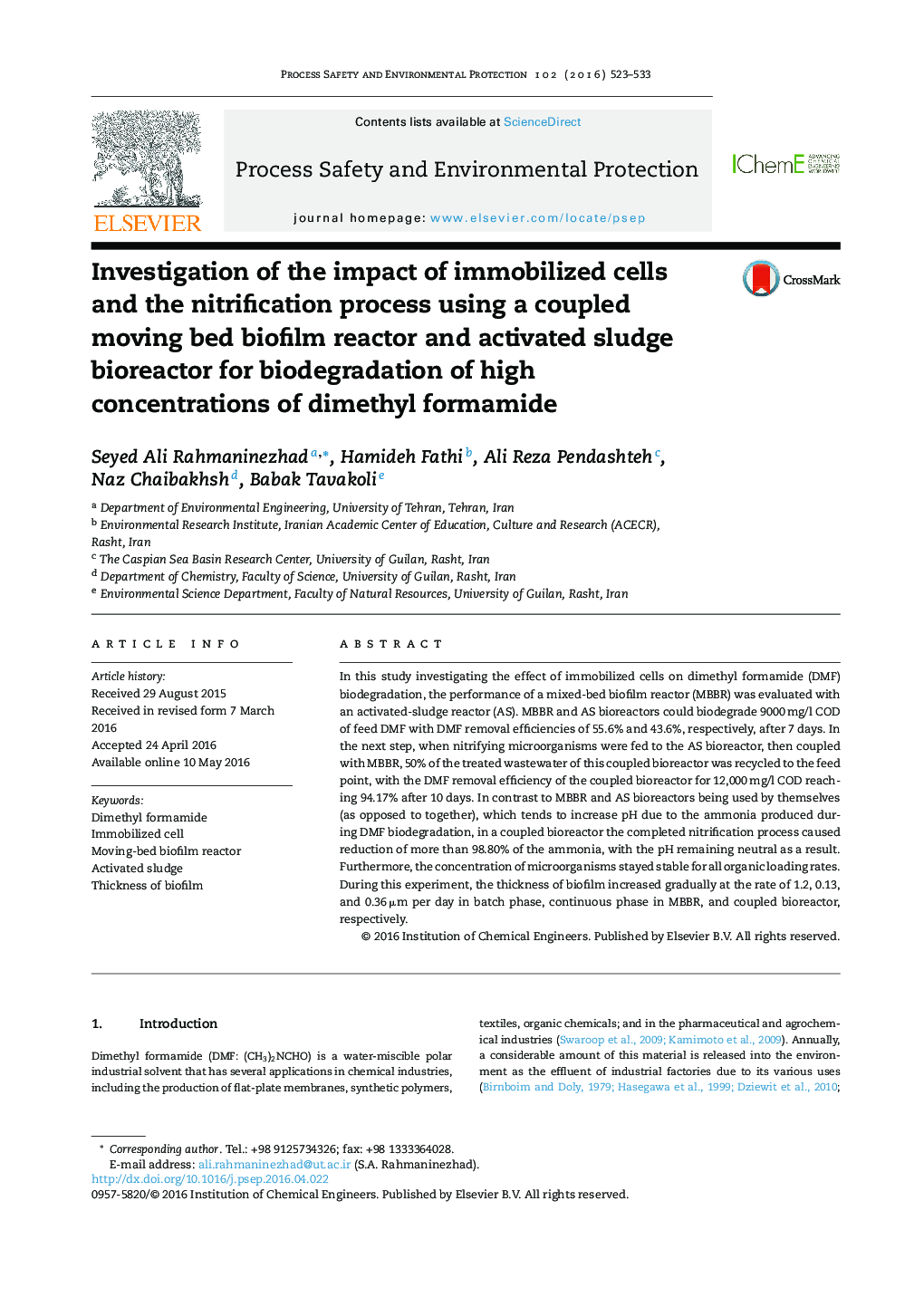| کد مقاله | کد نشریه | سال انتشار | مقاله انگلیسی | نسخه تمام متن |
|---|---|---|---|---|
| 588106 | 1453336 | 2016 | 11 صفحه PDF | دانلود رایگان |
• MBBR removed more COD than AS bioreactor especially at high OLR.
• Nitrification for control of pH is crucial step in DMF's biodegradation.
• Coupling MBBR–AS and recycling 50% of treated effluent augment DMF's biodegradation.
• Using nitrifying bacteria in AS bioreactor is necessary.
• This process does not need any buffering material for controlling pH.
In this study investigating the effect of immobilized cells on dimethyl formamide (DMF) biodegradation, the performance of a mixed-bed biofilm reactor (MBBR) was evaluated with an activated-sludge reactor (AS). MBBR and AS bioreactors could biodegrade 9000 mg/l COD of feed DMF with DMF removal efficiencies of 55.6% and 43.6%, respectively, after 7 days. In the next step, when nitrifying microorganisms were fed to the AS bioreactor, then coupled with MBBR, 50% of the treated wastewater of this coupled bioreactor was recycled to the feed point, with the DMF removal efficiency of the coupled bioreactor for 12,000 mg/l COD reaching 94.17% after 10 days. In contrast to MBBR and AS bioreactors being used by themselves (as opposed to together), which tends to increase pH due to the ammonia produced during DMF biodegradation, in a coupled bioreactor the completed nitrification process caused reduction of more than 98.80% of the ammonia, with the pH remaining neutral as a result. Furthermore, the concentration of microorganisms stayed stable for all organic loading rates. During this experiment, the thickness of biofilm increased gradually at the rate of 1.2, 0.13, and 0.36 μm per day in batch phase, continuous phase in MBBR, and coupled bioreactor, respectively.
Journal: Process Safety and Environmental Protection - Volume 102, July 2016, Pages 523–533
